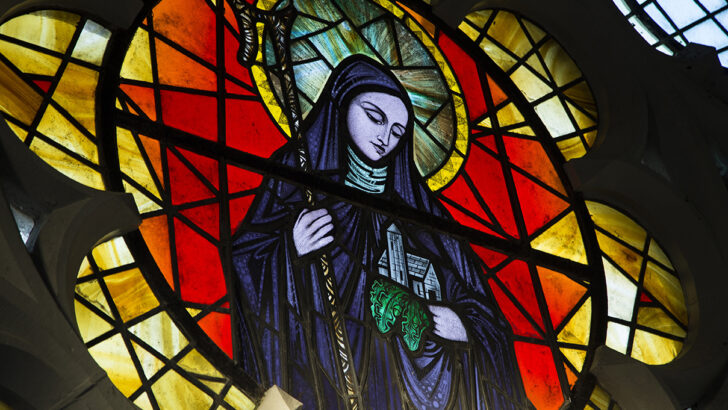The new national holiday on the first day of February has been judged a great success on its first celebration. Doubtless in the decades to come ways of celebration will become fixed and standardised, and we will all know what we can expect in the way of local events to celebrate the role of women in Irish history.
But over recent weeks some comments I have heard, especially from leading figures in Irish society, have been curious. I heard a speech the other day in which it was claimed that St Brigid had been ignored over the centuries in favour of men. Now that, it seems to me, does not conform to the historical record.
The modern study of ancient Irish saints can be said to have begun with the creation of John Colgan’s Acta Triadis Thaumaturgae published at Louvain 1647, just before the Cromwellian persecutions in Ireland. This was an adjunct to his Lives of the Irish Saints.
In these books he laboured to arrange, confirm and make coherent the fragments of tradition that had survived both by word of mouth or in manuscript. Most of the later, more scientific investigations all begin with Colgan, the investigations let us say by the Bollandists, John O’Hanlon, or more recently Pádraig Ó Riain.
The three “wonder workers” of the title were St Patrick, St Brigid and St Columba. Colgan was able to write this immense book, albeit in exile, because these three, including St Brigid had not been forgotten, had not been suppressed, because indeed they were simply the three most honoured saints in Ireland. Not much neglect there.
Without going back to Early Christian Ireland, we need only go as far as the badly resisted Norman intrusion into Ireland in 1169, a century after their incursion into England. The Norman historian of these events was Gerald de Barri (often known as Giraldus Cambrensis, “Gerald the Welshman”).
Gerald has never been popular with Irish patriotic historians, who claim he often misrepresents many aspects of the old Gaelic order. But it is striking that he gives in his account of Ireland a warm and respectful account of St Brigid’s shrine in Kildare, its continuing flame of purity and hope. This shows there was no neglect of the saint by the new masters of the land.
His passage on the shrine is linked with passages describing a large, illuminated manuscript he saw in Kildare, in which he uses the descriptive term “the work of angels”. This phrase from St Brigid’s territory has come to be applied to the Book of Kells and other Irish manuscripts of a similar kind (thought what he saw has never really been identified).
Gerald de Bari was forced to stand in awe of some people and works of art related to Brigid, from which we can deduce that the saint was celebrated, even renowned, among the Normans.
But the real evidence of the celebration of St Brigit is to be found, as some historians would have expected, not among high churchmen, but the common people of Ireland.
Not only was her feast day well kept, it was marked by the making and posting up the woven crosses now called “St Brigid’s Crosses”, these have persisted in the folk life of Ireland over the centuries down to today.
And again confirming the popularity of the saint among the people was the use of her name. All over Ireland, even in the North, schools, churches and shrines are dedicated to her.
The use of St Brigid as a girls’ name never died out. Indeed it is notorious that in the cities of the north-eastern sea-board of the United States the house maids were Irish, and as often not referred to as Brigid (even though that may not have been their name). The maids were Irish, the cooks (semi-professional persons of authority after all) were Swedish.
No: the memory and hope of Brigid flourished over the centuries. To even hint that she was neglected or suppressed is quite simply not true. I have a certain amount of scepticism about many of the things now said by devotees and critics of the saint these days, but then I am sceptical about many things. But even if you are an important public figure, one can’t deny the facts of her wide celebrity.


 Peter Costello
Peter Costello St Brigid of Kildare.
Photo: CNS/Cillian
Kelly
St Brigid of Kildare.
Photo: CNS/Cillian
Kelly 